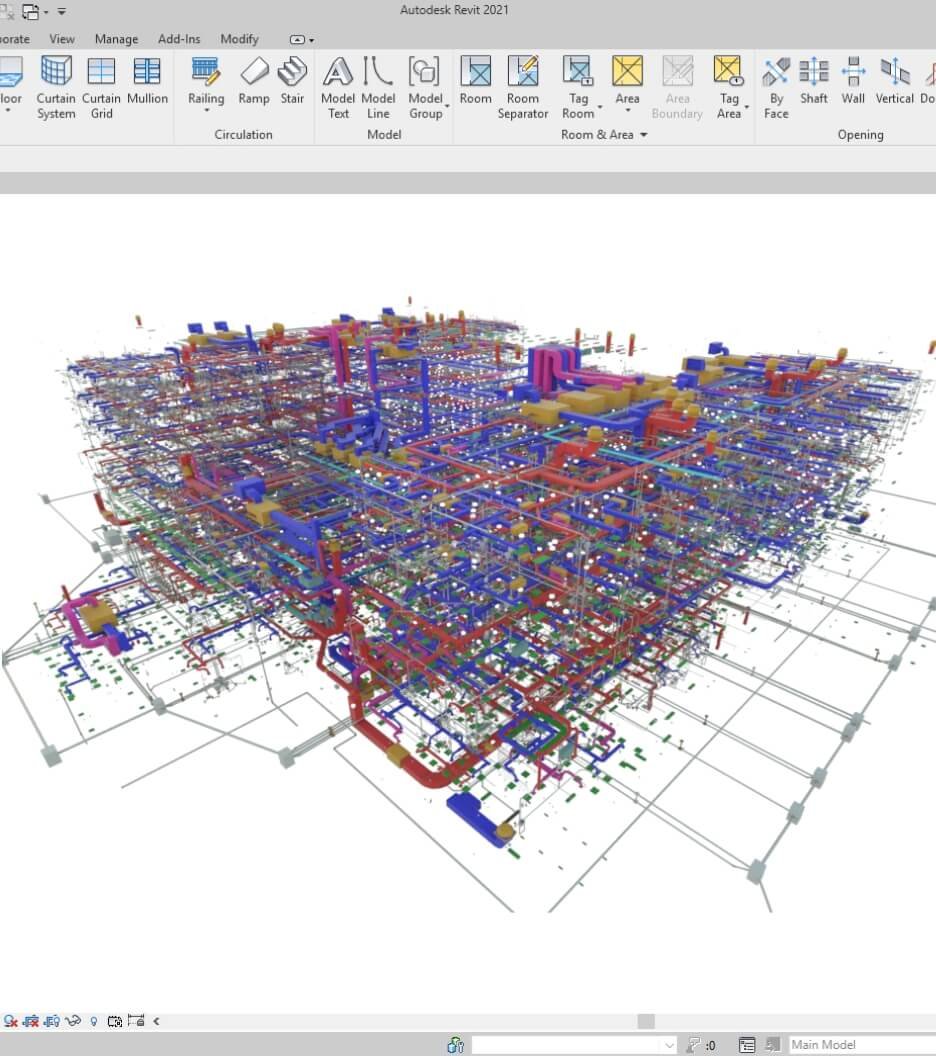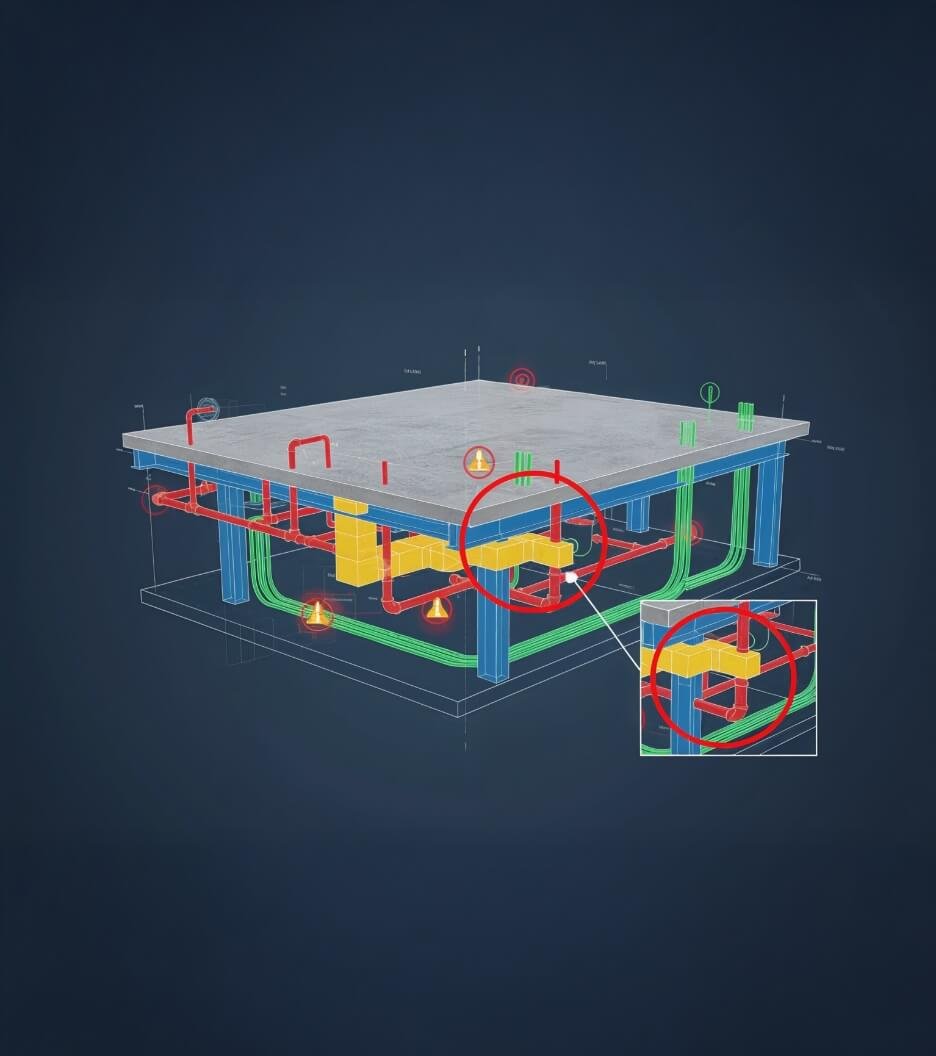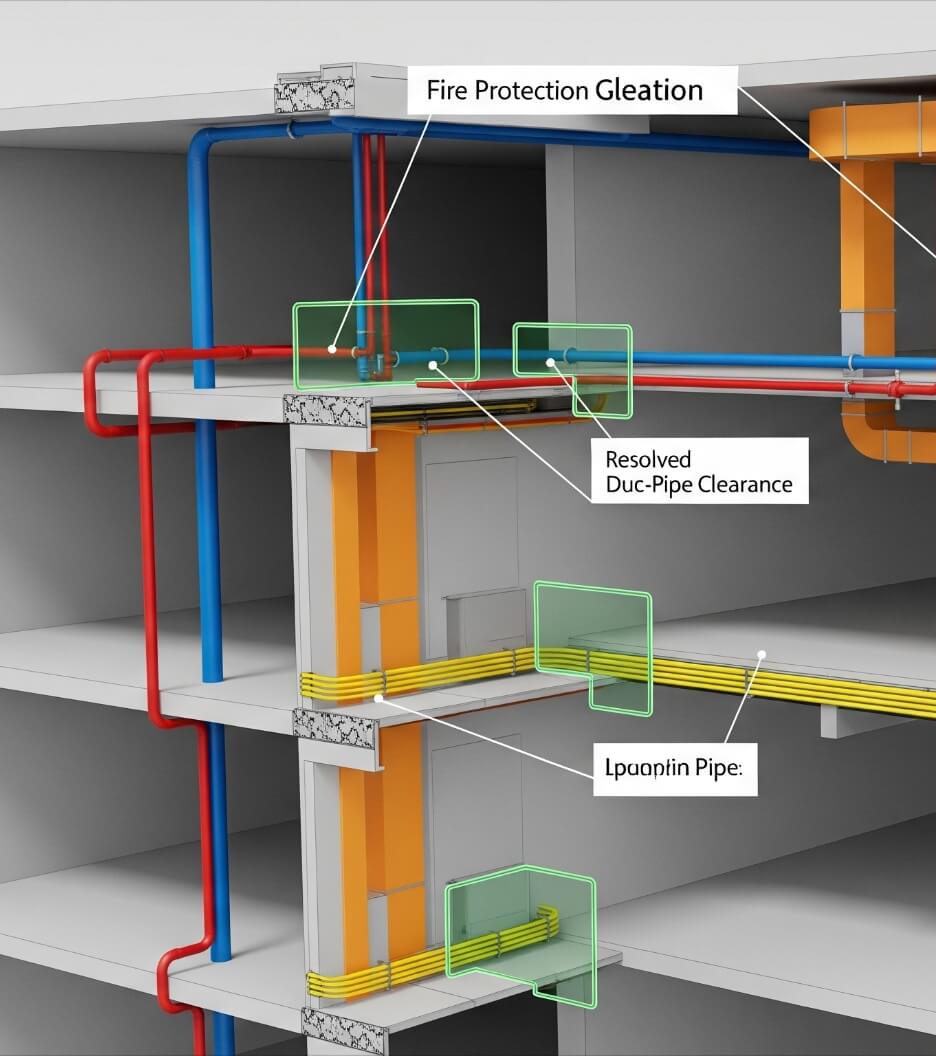 Rahul Dogra
Rahul Dogra
How Clash Detection Improves Collaboration Among AEC Professionals
 Rahul Dogra
Rahul Dogra
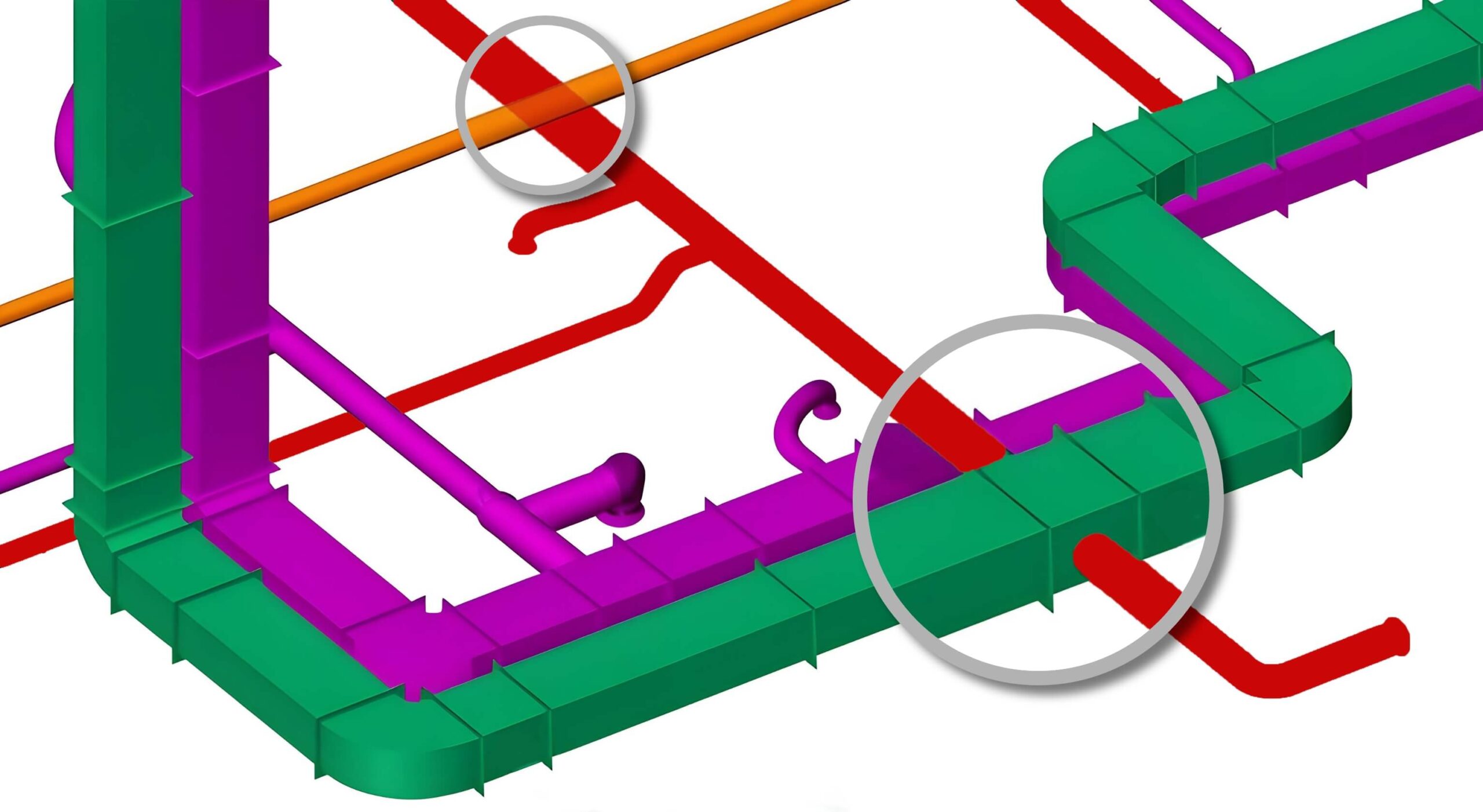
Send Us Your Requirement
Building information modeling services has emerged as a revolutionary technology in the AEC landscape. A marvelous technology has reshaped the working approach for architects, engineers, and contractors. However efficiency and accuracy have always been pillars of a project’s success. A small error in the project at any stage can lead to significant loss and delay in the project. Every infrastructure project entails critical components that make the building functional and comfortable. From appropriate lighting to air ventilation, all the elements in the building work efficiently when seamlessly fit together in the intended design. Furthermore, the architecture and construction industry is dynamic, constantly updating with innovation and technologies that help to enhance the current work process.
Many AEC professionals work on the same model, according to their respective fields and expertise. Every stage of the construction project encompasses critical processes and methodologies that demand the utmost accuracy and precision. It includes designers, architects, civil engineers, contractors, and more. Thanks to 3D BIM services, AEC experts can collaboratively work on the same model and stay updated with any modifications. This bridges the gap of communication and ensures a smooth workflow for project completion.
However, traditional practices and the involvement of different professionals can make the process more complex as each expert delivers their opinions to bring comprehensive solutions, which is why BIM is one of the revolutionary approaches that allows different AEC professionals to communicate effectively. During the various stages in the BIM model, harnessing clash detection in construction can be valuable. It will enable architects, engineers, and contractors to collaborate and quickly identify potential errors and clashes before the groundwork begins.
During various stages of architecture, the most critical aspect is the MEP component, where the chances of errors and clashes are high. Professionals leverage MEP clash detection in the BIM model to identify potential errors, location, and quick resolution. This ensures that the project is efficient, cost-effective, and accurate. Let’s understand BIM clash detection and how it allows architects, engineers, and contractors to improve collaboration from the start to the end of the project.
Hire Experts for Clash Detection to Resolve Conflicts Efficiently
Get a Quote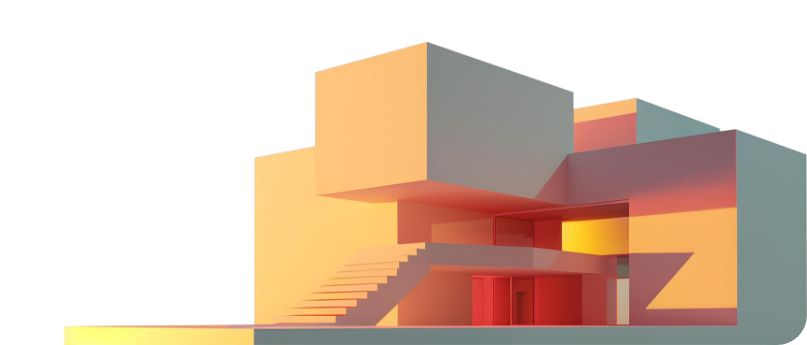
Understanding Clash Detection in Detail
In the construction industry, there are multiple unforeseen conflicts, errors, and clashes during the different stages of construction. These errors or clashes may look small but result in significant costly rework, potential delay in the project, resource and material misuse, and much more. During the traditional era, architects, engineers, and other professionals faced challenges coordinating and communicating. This gap always leads to crucial and costly errors in the project. As BIM has redefined how projects are planned and executed, the AEC sector continues embracing other BIM tools that assure professionals can improve outcomes and overcome certain obstacles. Clash detection in BIM stands out in the building information modeling framework.
This is one of the indispensable features that provides quick identification and resolutions for potential clashes and conflicts in the different stages of projects. This proactive approach quickly identifies, analyzes, and resolves the clash within the BIM model, resulting in cost and time savings. As MEP is a significant and complex stage, MEP clash detection plays a crucial role in overseeing the seamless coordination among three disciplines. As a matter of fact, clash detection is a vital approach for the seamless integration of different construction components and elements within the 3D BIM model.
Quick identification and resolution of conflicts make it the most prominent process for architects, engineers, and contractors. This also results in improved communication and collaboration among various AEC professionals, allowing each expert to stay updated with current changes and achieve the best outcomes. Architects, MEP engineers, and other contractors seamlessly work on a BIM model that encompasses the details of geometry, spatial relationships, and other data that help professionals manage accurately.
Integrated with MEP components, clash detection plays a crucial role in identifying potential conflicts that can occur in the design. These conflicts may be expensive and require major rework in design that could consume crucial time. Additionally, it is also significant in BIM coordination services, ensuring each stage is error-free, well-coordinated, and seamlessly fits together to enhance the overall performance of the infrastructure.
Clash detection is an approach that significantly relies on software that analyzes the 3D BIM model. Overlaying different components and elements, such as mechanical, plumbing, electrical, architectural, and structural, is identified in the designing and planning stage, preventing costly rework and delays in the actual construction project. Above all, the following are the primary benefits of multidisciplinary BIM collaboration.
Benefits of Multidisciplinary BIM Collaboration
Improved accuracy and reduced rework
Enhanced communication and collaboration
Minimize on-site conflicts
Higher accuracy in construction drawings
Cost and time-saving
Facility management
Enhanced safety
Project optimization
These are some of the major benefits of clash detection in construction. As a matter of fact, the crucial process requires advanced technology use and expertise skills for accurate outcomes. In-house teams of resources are usually occupied in other core activities and lack the knowledge to understand the complex process. Therefore, partnering with a BIM services provider who specializes in BIM clash detection approach.
A team of experts ensures the accuracy and efficiency of the project while resolving conflicts with comprehensive solutions. Furthermore, BIM experts understand the complexity of MEP clash detection due to the involvement of different components to seamlessly fit together. With a significant and accurate process of detecting errors and conflicts, architects, engineers, and contractors enhance coordination that eventually results in the success of construction projects. In addition to this, let’s explore how BIM clash detection collaboration works.
UniquesCADD successfully developed clash detection and quantity takeoff for large-scale buildings, providing an in-depth understanding of how clash detection is implemented in the process.
How BIM Clash Detection Works?
As discussed, clash detection and its vital role in the industry has also become mandatory in any construction project, regardless of nature, type, or size. As the process in the 3D BIM model operates through an organized and automated approach to detect any conflicts, it encompasses a significant work procedure that entails a few steps. For a complex process to work accurately, it is evident that the process must be followed to gain accurate outcomes. As precision in the clash detection process will also be helpful in precise construction documentation, BIM coordination, including MEP BIM coordination, results in enhanced collaboration. Here are a few crucial steps for understanding how BIM clash detection works.
- Step 1 Creation of BIM models: The foremost step is to create accurate 3D BIM models of different components, such as architectural, structural, and MEP, as they entail rich data of the project’s geometry, dimensions, spatial relationship, location, and other significant data. BIM modeling here is evident as each component’s model will be further utilized.
- Step 2 Integration of models: Once each expert creates a model, it is integrated into a centralized BIM platform for digital representation of the entire project. This BIM model includes all the multidisciplinary components of construction.
- Step 3 automated clash detection: After curating a single BIM platform, software for BIM clash detection is used to analyze the entire BIM model. The software for clash detection significantly identifies errors or conflicts in areas where the components overlap or clash with each other. The disputes may involve overlapping of two or more components, conflicting specifications, physical collisions, and more. Conflicts in the systems reduce building performance and increase risk factors in the long run.
- Step 4 clash resolution: Specialized software for clash detection detects potential conflicts in the BIM model and offers comprehensive resolutions through a collaborative approach for AEC professionals. Holistic solutions for errors may involve reworking element positioning, modifying designs, and more to rectify the errors.
These are the four crucial steps for clash detection in BIM that operates on advanced software to automatically identify errors throughout the BIM model. Once rectified and modified, the BIM model further helps to streamline the workflow and enables AEC professionals to improve communication and collaboration.
Only building information modeling cannot enhance the collaboration. Architects, engineers, and other experts curated 3D models of the respective components. After the integration of each model into centralized platforms, possible changes are foreseen in the designing stage for all the professionals involved. This is one of the most crucial advantages as it offers a collaborative approach for every expert to stay updated with the ongoing process and bring accurate solutions. Identifying and resolving clashes in digital 3D models helps eliminate the possible risks associated with construction projects. While mitigating possible risks, clash detection in BIM also helps ensure safety precautions, compliance with standard codes and regulations, and high-quality building design.
Impact of Clash Detection on Project Success
With the significant process of BIM, clash detection offers a variety of benefits and enables AEC professionals to collaborate efficiently and streamline construction work. Identifying the clashes at an early design stage, AEC professionals ensure resolution within the model and bring effective solutions without compromising the quality. This intricate process results in cost savings and eliminates material wastage. As a matter of fact, clash detection in construction in modern times has become a significant role player, enabling architects, engineers, and contractors to seamlessly collaborate on the project, reduce material wastage, accelerate the process, and keep a progress track. This brings efficient results on the groundwork, ensuring an accurate and precise construction process.
With continuous advancement in the architecture and construction industry, clash detection in BIM will improve with the amalgamation of advanced software that helps optimize the overall construction process, improves communication, and more. For AEC professionals today, ensuring seamless harmony between various components and enhancing collaboration among architects, engineers, and contractors has become essential. However, to ensure the BIM clash detection results, it is essential to understand BIM coordination services. Coordination in BIM is a comprehensive approach to aligning the different components of projects.
This involves coordination of architectural, structural, fire safety, mechanical, and other components. Moreover, AEC experts focus on MEP BIM coordination as three disciplines require acute synchronization in the project for infrastructure to become functional. For accurate clash detection, BIM coordination is a crucial aspect to focus on that contributes to optimizing the project and enabling professionals and stakeholders to coordinate accurately. The following are key advantages of BIM coordination for clash detection.
Key Advantages of BIM Coordination for Clash Detection
Improved decision making
Safety and regulatory compliance
Eliminates rework
Enhanced productivity and pace
Better visualization
Minimize miscommunication
In modern times, BIM coordination for AEC teams and clash detection in the project have become significant and transformative approaches to achieving the most accurate and efficient results. As significant and crucial as these services are, outsourcing them is evident for precise results. Let’s understand how outsourcing to a reliable BIM service provider can be beneficial.
Outlook on Outsourcing BIM Clash Detection
The construction and architecture sector is growing rapidly with advanced technology and new innovations. Since its inception, BIM has reshaped the working environment for AEC professionals and resulted in the most accurate and efficient outcomes. As a vast concept in the architecture landscape, BIM and its related services are typically outsourced to a reliable partner.
In the advancing age, AEC firms partner with BIM consulting company to understand each aspect, importance, and precision in the construction project. In addition, AEC firms are preoccupied with various responsibilities, which enhances the possibility of outsourcing BIM services. Construction and architecture projects are critical due to the involvement of multiple stages, outsource BIM experts offers various advantages, including;
- Accurate and efficient outcomes
- Expertise knowledge
- Strictly adheres to regulatory requirements
- Timely delivery
- Enhanced project outcomes
- Increases ROI
- Latest technology and software use
These are some of the benefits of outsourcing BIM services. UniquesCADD is a renowned and trusted outsourcing BIM company. With extensive experience and a strong clientele, the UniquesCADD team offers various BIM services. The team of experts ensures accuracy and reduces the risk of errors.
Ending Thoughts
Clash detection in construction is now a crucial aspect of any architectural project, regardless of its nature or size. It helps to ensure seamless harmony between various components and improve collaboration among architects, engineers, contractors, and various stakeholders.
